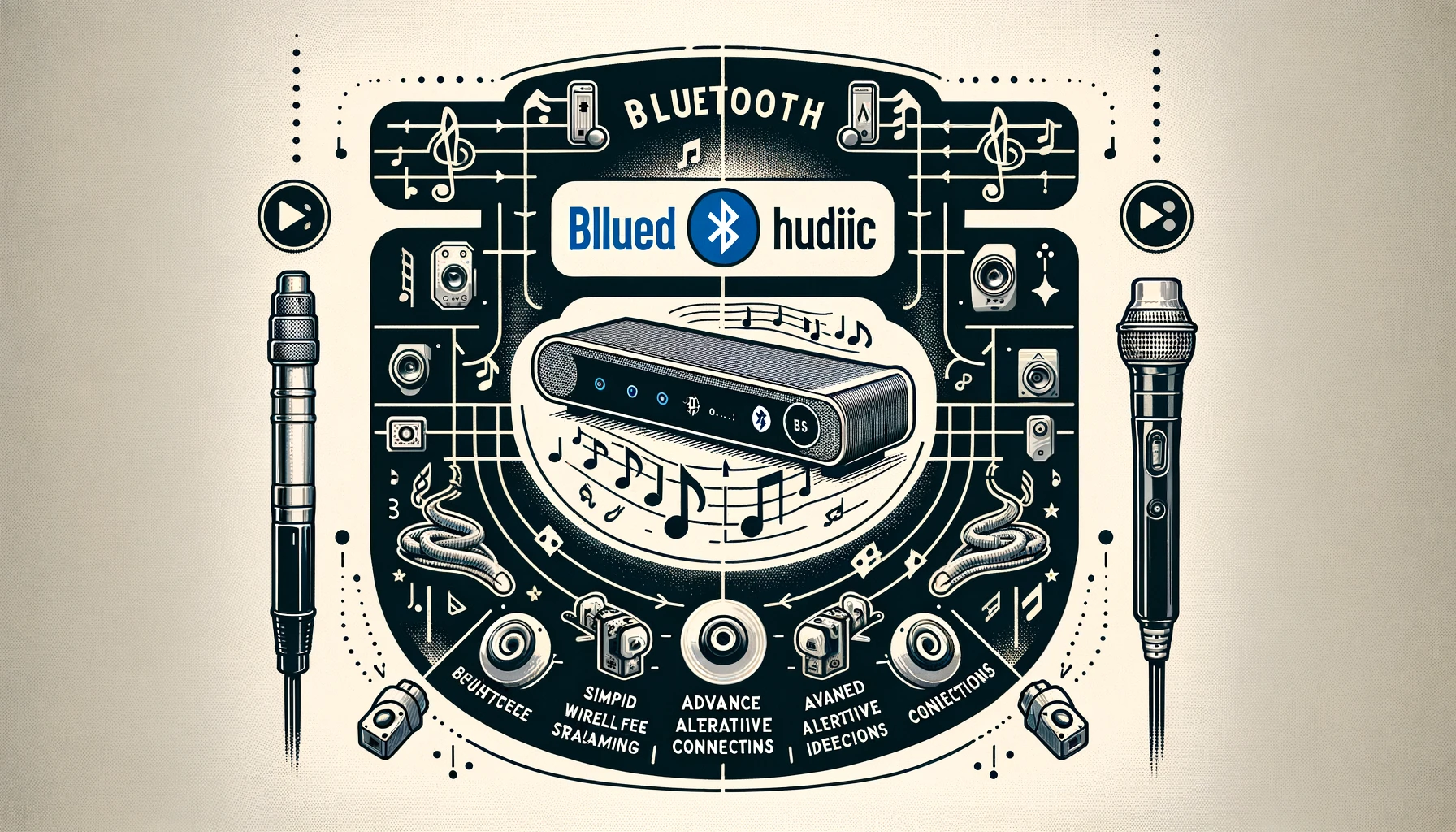Do you crave a simplified cable-free soundbar streaming music without complicated setups?
While Bluetooth drops cords conveniently, innate quality and reliability compromises arise.
Let’s dive into ideal Bluetooth soundbar use cases versus advanced alternative connections that audiophiles require.
Are Bluetooth soundbars any good?

The short answer leans “yes” for casual flexibility but “no” for critical listening. While Bluetooth drops cables conveniently between devices, it accepts substantial quality and reliability compromises that better soundbars avoid.
We’ll analyze the performance gaps below.
Bluetooth Connectivity Conveniences

Bluetooth connectivity makes modern soundbars wonderfully easy to wirelessly pair with televisions, smartphones, tablets and computers for audio playback without wrestling HDMI cables or optical wires.
Bluetooth pairing also avoids WiFi network passwords or configuring stereos as wireless hotspots to enable communications. The Bluetooth wireless standard simply lets supported soundbars see nearby source devices available for instant linking.
Users then tap a connect button on both the soundbar and Bluetooth media source unit screens typically facilitating hooks-up within seconds.
No networking know-how gets required – just activation of the feature itself. Bluetooth thereby brings cable-free convenience to soundbar connectivity for casual listeners not concerning themselves with advanced surround formats.
Bluetooth Audio Quality Limitations
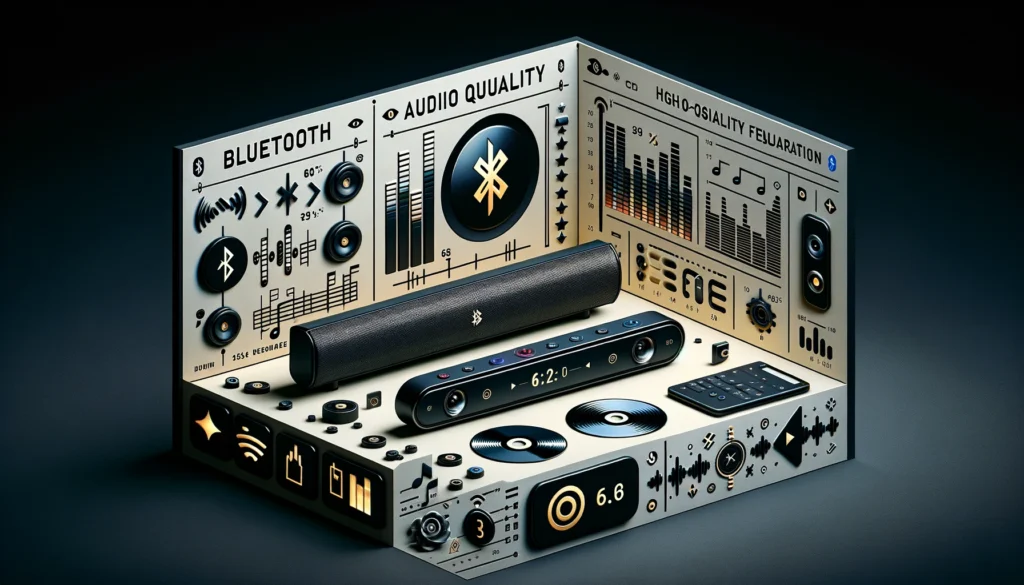
However, the very wireless convenience and simplicity empowering Bluetooth soundbars does result in innate audio quality limitations that enthusiasts, discerning listeners and home theater owners need to factor.
Most prominently, Bluetooth audio employs substantial data compression to transmit without delays, typically utilizing 320kbps MP3 quality at best. Complex CD-quality or Hi-Resolution signal integrity gets compromised.
Maximum 16-bit, 44.1kHz CD-level resolution marks Bluetooth’s current peaks unable to handle 24-bit Hi-Res PCM, let alone lossless streams.
Likewise, Bluetooth tops out at two channels of stereo separation so immersive surround mixing effects get condensed down to 2.0 streams omitting discrete center, rear and subwoofer channel clarity discrete home theater connections retain.
Auditory panoramas collapse for music lacking true spread. Movies flatten to basic left/right imaging outside the screen space itself devoid of ambient dimension beyond. While convenient, Bluetooth sonics make notable sacrifices.
Ideal Bluetooth Soundbar Use Cases
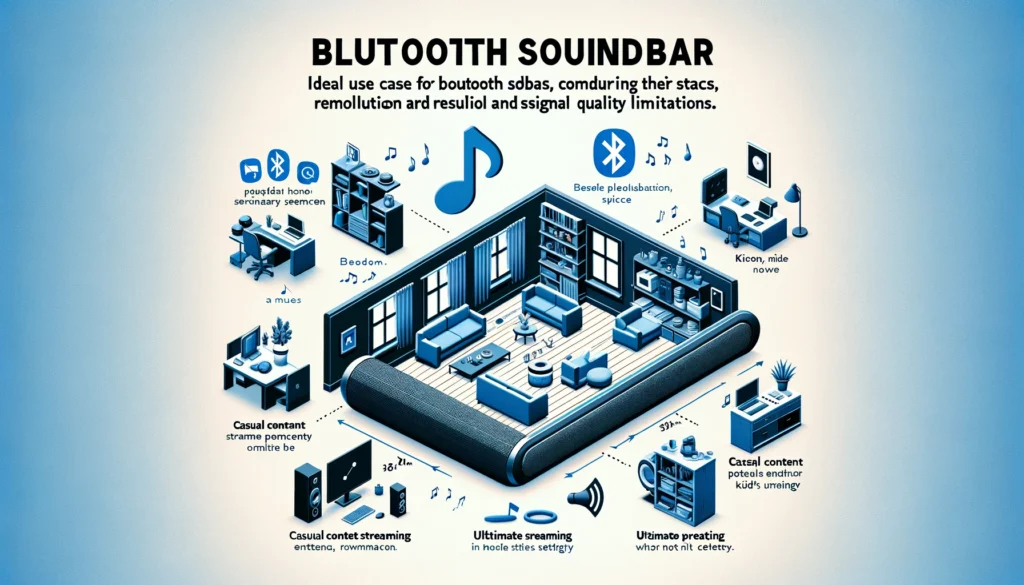
Given the innate resolution, channel count and general signal quality sacrifices Bluetooth audio accepts to facilitate no-fuss wireless connectivity.
Bluetooth-reliant soundbars serve most appropriately as affordable sonic enhancers in secondary living spaces where ultimate performance proves less critical.
Bluetooth soundbars stream casual content adequately enough in bedrooms, kitchens, offices, dorms or kids’ rooms.
Bluetooth connectivity also suits supplemental outdoor deck, patio and porch zones given lessened wiring challenges and simplified bring-your-own-device music pairing versus trying to stretch WiFi networks unreliable through thick walls.
Bluetooth’s streaming flexibility focuses more on quick hits of entertainment than dedicated analytical listening or surround sound immersion. It’s made for mobility and flexibility prioritizing access over resolution.
If seeking big sound for discerning movie nights with premium gear, step-up from Bluetooth which compresses audiophile intentions.
Enhancing Bluetooth Soundbar Performance
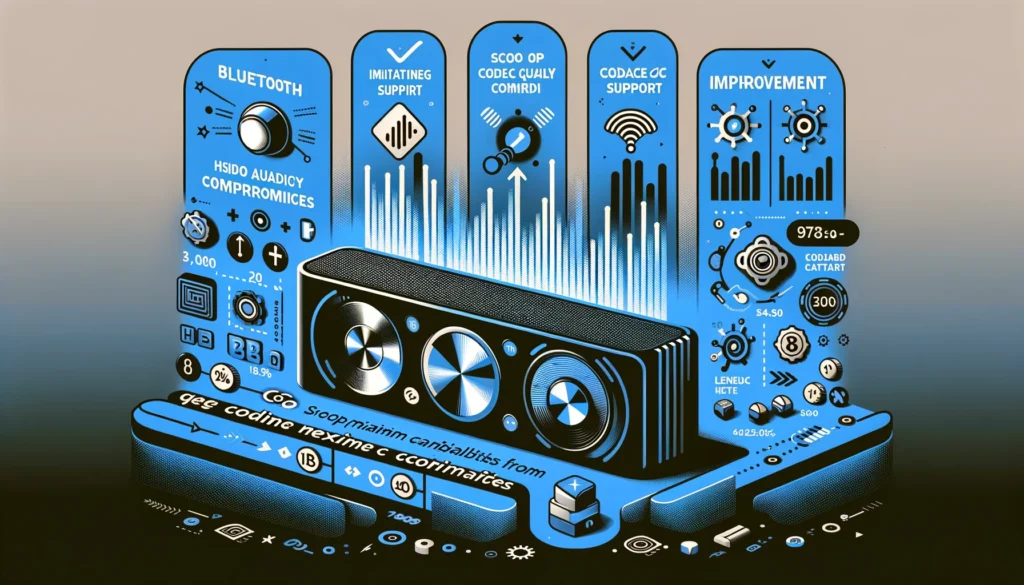
While Bluetooth audio’s convenience does necessitate notable quality compromises compared to WiFi and physically connected alternatives,
You can still optimize aspects improving listening experiences marginally through scooping maximum capabilities from its codec support and configurations. Start with the best Bluetooth codec your devices support.
aptX and aptX HD support push bitrates higher than standard SBC codec rates yielding cleaner transient detail important for music clarity.
Every little bit helps overtaxed Bluetooth signals so choose source material carefully avoiding low bitrate streams showing obvious distortion first. Prioritize 320kbps files if sticking with MP3s.
Delicate acoustic tracks or symphonies expose compression side effects first.
Additionally, position Bluetooth antennas optimally avoids obstruction between soundbars and streaming mobile devices which can introduce stutter and interruption.
Unobstructed line-of-sight links are strongest without physical barriers impeding. Proper antenna orientation improves range and stability too. Every incremental upgrade brings Bluetooth soundbars closer to their convenience-derived ceilings.
Just stay realistic with expectations as bandwidth laws limit reachable resolution.
Bluetooth Reliability & Latency Considerations
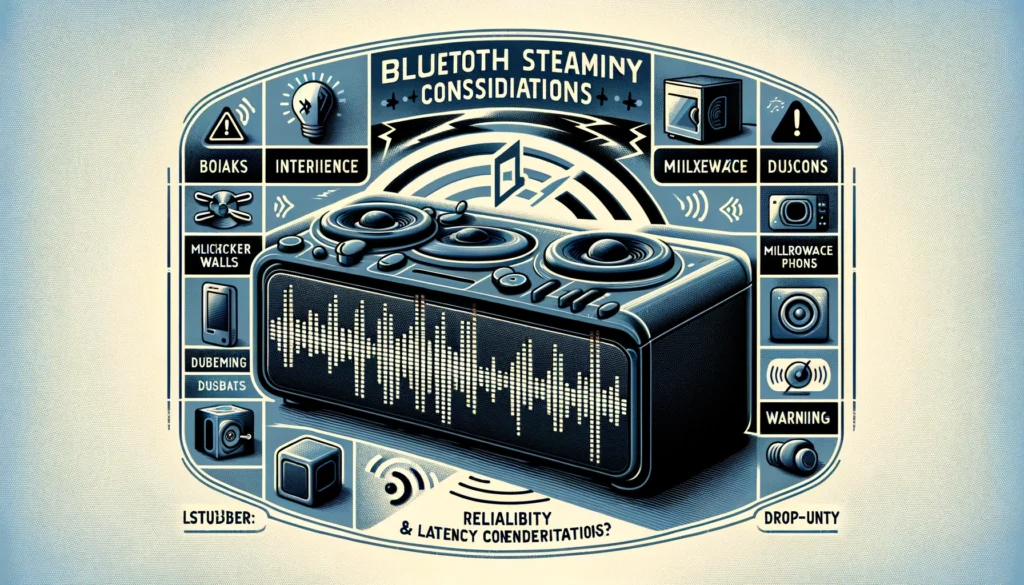
Further marring Bluetooth streaming’s otherwise simple and flexible wireless connectivity proposition includes potential reliability issues including stutter, interruptions and outright drop-outs.
Electrical interference, thicker walls, microwave ovens and cordless phones can still degrade and disrupt Bluetooth signals floating untethered without as much error correction possible on wired interfaces.
Even walking around rooms with streaming mobile devices risks inducing playback interruptions annoying listeners.
Moreover, intrinsic streaming delays through Bluetooth pathways force processing systems to cache several seconds of audio in buffers to keep playback smooth if connections temporarily waiver.
This caching however increases latency lag between on-screen visuals in shows and films actually reaching your ears through Bluetooth soundbars out of sync. Bluetooth latency lags grow very apparent noticeably reducing AV cohesion.
Bluetooth Soundbars vs Advanced Alternatives

Given the assorted functionality, reliability and audio quality compromises Bluetooth streaming and connectivity brings to modern soundbars even when making best efforts maximizing capabilities there.
More advanced alternative connectivity options like WiFi streaming or HDMI physical inputs render noticeably superior listening experiences without lag, compression or disruption downsides if your configuration allows.
Models offering WiFi and Ethernet implement steadier network protocols and often feature broader codec support including lossless streaming.
HDMI hooks directly into audiovisual source devices like media players, cable boxes or games consoles preserving highest available resolutions like Dolby Digital Plus.
Dolby Atmos or DTS:X absent over Bluetooth missing sufficient bandwidth. While Bluetooth wins for mobility and flexibility, critical listeners demand something steadier.
Conclusion
In conclusion, Bluetooth soundbars provide convenient wireless streaming flexibility between mobile devices.
But limited bandwidth constraints sacrifice audio quality and lag times noticeable next to advanced WiFi/HDMI models with heavier surround sound support. Bluetooth efficiency fits secondary spaces on a budget not demanding reference fidelity.
Just temper expectations around resolution limits and reliability risks that sophisticated listeners will likely deem unacceptable long-term.
